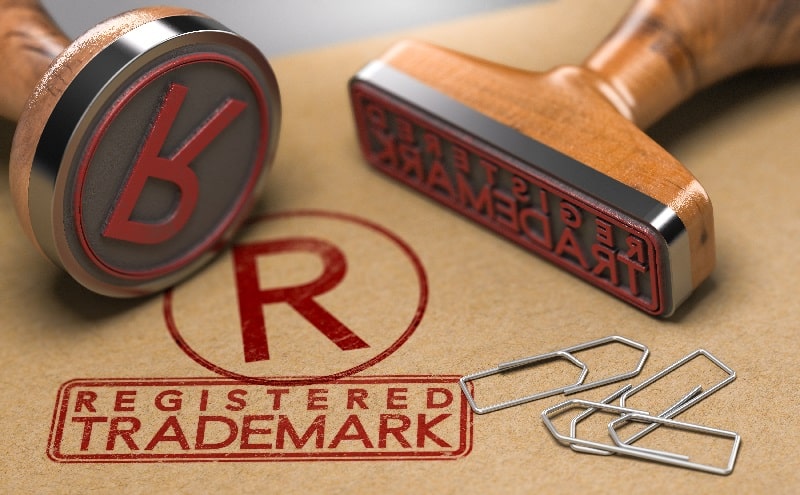MGP Ingredients, Inc v Manildra Milling Corporation [2023] APO 32
Venue:
Delegate:
31 May 2023
Australian Patent Office
Dr S. J. Smith
In this first in class case, the Patent Office considered the circumstances in which the inclusion of a trade mark in a claim may not result in a lack of clarity. Notwithstanding the registered Novozymes mark for ‘Alcalase’, the use of ‘alcalase’ in the claims was held to be ‘generic’ – referencing a protease preparation that included but was not limited to the Novozymes ‘Alcalase’ protease product – providing a sufficiently certain meaning.
Background
Manildra Milling Corporation sought to claim a method of producing gluten-free starch comprising a series of steps, one of which included treatment with ‘alcalase’, while the description referred to both ‘alcalase’ and ‘Alcalase’. Alcalase® is a proprietary name, owned by Novozymes, and applied to its products containing a proteolytic enzyme produced by submerged fermentation of a selected strain of Bacillus licheniformis.
Opponent MGP Ingredients submitted that the use of a proprietary name din the claims gave rise to a lack of clarity as the Novozymes product may change over time creating a movable target such that the scope of the claims are indeterminate.
Manildra submitted that ‘alcalase’ referred unambiguously to any food grade Alcalase product, ie a productcontaining the protease enzyme derived from Bacillus licheniformis.
MGP’s opposition was ultimately unsuccessful on the ground of lack of clarity, and on its other pressed grounds (support, inventive step and support). No appeal was filed, and the patent has now been granted.
Key Issues
Whilst there is no express prohibition on the use of trade marks in a patent claim, Australian and New Zealand patent examiners typically frown upon such use. A trade mark is a sign that denotes origin, and a trade mark-branded product may vary from jurisdiction to jurisdiction and over time. Therefore inclusion of a trade mark in Australian and New Zealand claims will typically result in clarity objections during examination.
With a claim directed to or encompassing a pharmaceutical substance, it is often possible to amend the claim to replace the brand name of a drug with its generic name (i.e. the International Non-Proprietary Name or INN) without triggering an added matter objection. However, in some circumstances (e.g. where there is no INN), an alternative amendment strategy may be required to overcome the objection.
Whilst there has been no relevant case to date, according to IP Australia’s Patent Manual of Practice and Procedure:
A claim that uses a trade mark to identify an element of an invention may not be clear through an inability to establish the precise scope of the claim. Where the scope of a claim is uncertain or ambiguous as the result of the use of a trade mark, examiners should object that the claim lacks clarity [2.11.5.7A].
Further:
A trade mark is used to identify the source of origin of a good, not its properties. For example, the composition of laundry detergents sold under a particular trade mark or proprietary name are likely to vary in different regions of Australia (due to differences in the ‘hardness’ of local water supplies), as well as change over time [2.11.3.8A]
Is a Trade Mark a Moveable Target?
In determining whether the use of ‘alcalase’ in the claim resulted in a lack of clarity, the hearing officer looked quoted the decision of Hely J in Flexible Steel Lacing Company v Beltreco Ltd1:
“Lack of precise definition in claims is not fatal to their validity, so long as they provide a workable standard suitable to the intended use. The consideration is whether, on any reasonable view, the claim has meaning. In determining this, the expressions in question must be understood in a practical, commonsense manner. Absurd constructions should be avoided and mere technicalities should not defeat the grant of protection.”
The hearing officer summarised MGP (the opponent’s) concern as ‘a feature defined by a trade mark is indeterminate over time given that the manufacturer may change the product sold under the trade mark, creating a movable target such that the scope of the claim cannot be determined’.
Outcome
Here because the hearing officer accepted that the term ‘alcalase’ was used in the claim in a generic manner, reflecting use in the field ‘over an extended period’, the hearing officer rejected the MGP challenge based on lack of clarity. The hearing officer said:
‘In this case, neither the claims nor the description refer explicitly to a specific product….. but the specification refers to Alcalase in a more general manner as a protease. It appears based on the contemporaneous evidence that there has been, over an extended period, an understanding that the term Alcalase refers to a commercially available protease preparation from Bacillus licheniformis and there was no evidence before me that this has ever been otherwise. The opponent noted that the apparent generic use of ‘alcalase’ in the specification and in other documents does not mean that the term has in fact become generic. Such a conclusion is clearly outside the scope of this decision, but it is necessary to understand how the skilled person would understand the term Alcalase. The use of this term, particularly in contemporaneous documents, is necessarily indicative of how the skilled person would understand it, and I consider the use in the specification to be part of the context within which the understanding arises. In the context of this application and based on the evidence of the experts and other documents discussed previously, I consider that the skilled person would understand Alcalase to refer to a protease preparation (specifically, serine protease) derived from Bacillus licheniformis.”
MGP’s support and inventive step challenges were also unsuccessful.
Implications
Prudent applicants will ensure that all claimed terms are broader than any registered mark. However, where a trade mark is used more broadly in the specification than as a reference to the goods supplied under that mark, such use may not be terminal to registration in Australia. Use of a proprietary name in a claim may not be terminal to validity of the claim where a reference to a trade mark-protected product is clearly defined within the specification to include a specific disclosure of the claimed features of the proprietary product (eg properties of the product and/or its function(s)).
Whilst amendments to replace a trade mark in patent claims may be possible, they may not be straightforward. Laws in Australia and New Zealand limit the ability to amend a patent specification after filing by precluding the addition of matter that extends beyond that disclosed in the specification as originally filed. Except where there is broad disclosure in the specification such an amendment application will likely trigger an ‘added matter’ objection which will result in rejection of the amendment application.
Such broad disclosure is vital in the case where the patent applicant may be forced to amend the claims to remove reference to the trade mark. Providing clear basis for an amendment will avoid triggering an added matter objection on amendment, and as it did for Manildra here, and may obviate the need for such an amendment entirely.
1 [2000] FCA 890; (2001) 49 IPR 331 at [81]
About Pearce IP
Pearce IP is a boutique firm offering intellectual property specialist lawyers, patent attorneys and trade mark attorneys to the life sciences industries (in particular, pharmaceutical, biopharmaceutical, biotech, ag-tech and food tech). Pearce IP is the 2021 ‘Intellectual Property Team of the Year’ (Lawyers Weekly Australian Law Awards) and was shortlisted for the same award in 2022. Pearce IP is ranked in IAM Patent 1000 and Managing IP (MIP) IP Stars, in Australasian Lawyer 5 Star Awards as a ‘5 Star’ firm, and the Legal 500 APAC Guide for Intellectual Property.
Our leaders have been recognised in virtually every notable IP listing for their legal, patent and trade mark excellence including: IAM Patent 1000, IAM Strategy 300, MIP IP Stars, Doyles Guide, WIPR Leaders, 5 Star IP Lawyers, Best Lawyers, and Australasian Lawyer 5 Star Awards, and have been honoured with many awards including Australian Law Awards – IP Partner of the Year, Women in Law Awards – Partner of the Year, Women in Business Law Awards – Patent Lawyer of the Year (Asia Pacific), Most Influential Lawyers (Changemaker), among other awards.

Chris Vindurampulle PhD
Executive, Patent & Trade Mark Attorney
Chris is a senior Patent and Trade Mark Attorney who is registered to practice before the intellectual property offices of Australia and New Zealand. He is experienced in patent drafting, patent and trade mark prosecution and opposition, and freedom to operate, opinion and due diligence work. Through his experience and delivery of highly-regarded client service, Chris has been recognised as a leading patent practitioner having been listed in the IAM Patent 1000 as a recommended individual for patent prosecution, and a Rising Star in 2021, 2022 and 2023 by Managing IP.

Kate Legge
Special Counsel, Lawyer
Kate is an experienced IP and patent lawyer, providing IP leadership for pharmaceutical product development and commercialisation in global markets – from initial scoping through to post-launch.
She has developed and implemented global IP strategies over more than 15 years at multi-national pharmaceutical companies. She is an Australian qualified and registered legal practitioner, and has a Master’s degree in IP Law and a BSc in biochemistry.

Renee White PhD
Associate, Patent Attorney
Renee works across a spectrum of life sciences fields including biochemistry, molecular and cellular biology, stem cells, agritechnology, pharmaceuticals, methods of medical treatment and prevention, biomarkers and immunology, including antibody technologies, diagnostics, food technology, and veterinary sciences.

